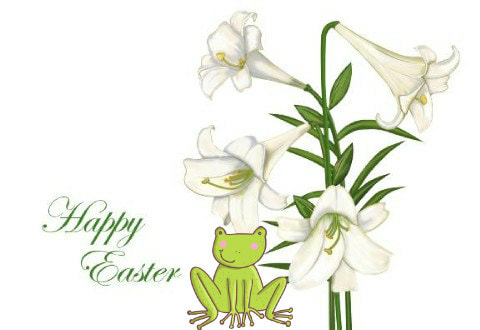1. Although the Bible describes lilies growing in Palestine, the large, white lily we recognize today didn't become common in churches until the 1800s, when popular tradition gave them the nickname Easter lily.
2. Lilium longiflorum is the botanical species of Easter lily, which is native to Japan's Ryukyu Islands.
3. Easter lily bulbs were first brought to the United States by a World War I soldier who smuggled a suitcase full of bulbs into the country as he returned home to Oregon in 1919.
4. Japan led the world in Easter lily bulb production until World War II interrupted the supply and sent prices skyrocketing. Hobby gardeners in Oregon started selling bulbs. Today, 95 percent of the world's Easter lily bulbs are produced on farms along the Oregon-Washington border, from where they're distributed worldwide to greenhouses for forcing into Easter bloom.
5. Because the date of Easter varies each year, greenhouse growers carefully schedule their crop of potted lilies to bloom at just the right time. If growing conditions aren't carefully monitored, an entire crop can be worthless if they miss Easter by blooming too early or too late.
6. Flowers will last longer if the yellow anthers inside are removed immediately when blossoms begin to open. Attempting to rebloom an Easter lily in its pot is usually unsuccessful, but they can be transferred to an outdoor perennial flower bed.
7. Easter lilies bloom in late September during the first outdoor planting season. In following years, they'll bloom at normal lily-flowering time in July at a height of about 3 feet.
8. Although Easter lilies are beautiful, they're very toxic to cats. Numerous university literature sources indicate that consumption of one or two leaves can cause kidney failure in cats.
9. The Lily (all varieties) is ranked as the 4th most popular flower in the world!
10. Based on the color or type, the Lily flower can convey different meanings:
white lily - modesty and virginity; orange lily - passion; yellow lily - gaiety;
lily of the valley - sweetness and purity of heart; Easter lily - symbol of the Virgin Mary, Tiger Lily - In Buddhism, it represents mercy and compassion.
11. The lily is actually widely used in traditional Asian medicine for the treatment of depression and certain types of toxicities.
12. The oil extracted from lilies actually has been found to have healing and softening properties. The oil has been known to work well for cracked and dry skin.
13. Some species of lilies can be used as food. Bulbs of lily contain a lot of starch and they are used as root vegetables
14. Besides humans, deer, insects, mice, and squirrels often eat wild lilies (But don't let your cat near them; they're highly poisonous to our feline friends!)
Nothing says Easter like the lily. They're beautiful, fragrant, and just plain nice to have around! Whatever your plans are this Easter weekend, I hope you can spend some time outside enjoying nature. Mother is in her full glory this time of year. I'm hopping off to spend time my easter with family just as soon as I get this blog posted. It gives me great pleasure each year to see my little brother Quigley hunting for all the treats that the Easter Frobitt left for him. Then, of course, a delicious dinner with Mom and Dad. 'll be back again on Tuesday.
Oh, and by the way, Monday is Earth Day. So double reason to spend time outside this holiday!
PEACE.
http://justfunfacts.com/interesting-facts-about-lilies/

 RSS Feed
RSS Feed